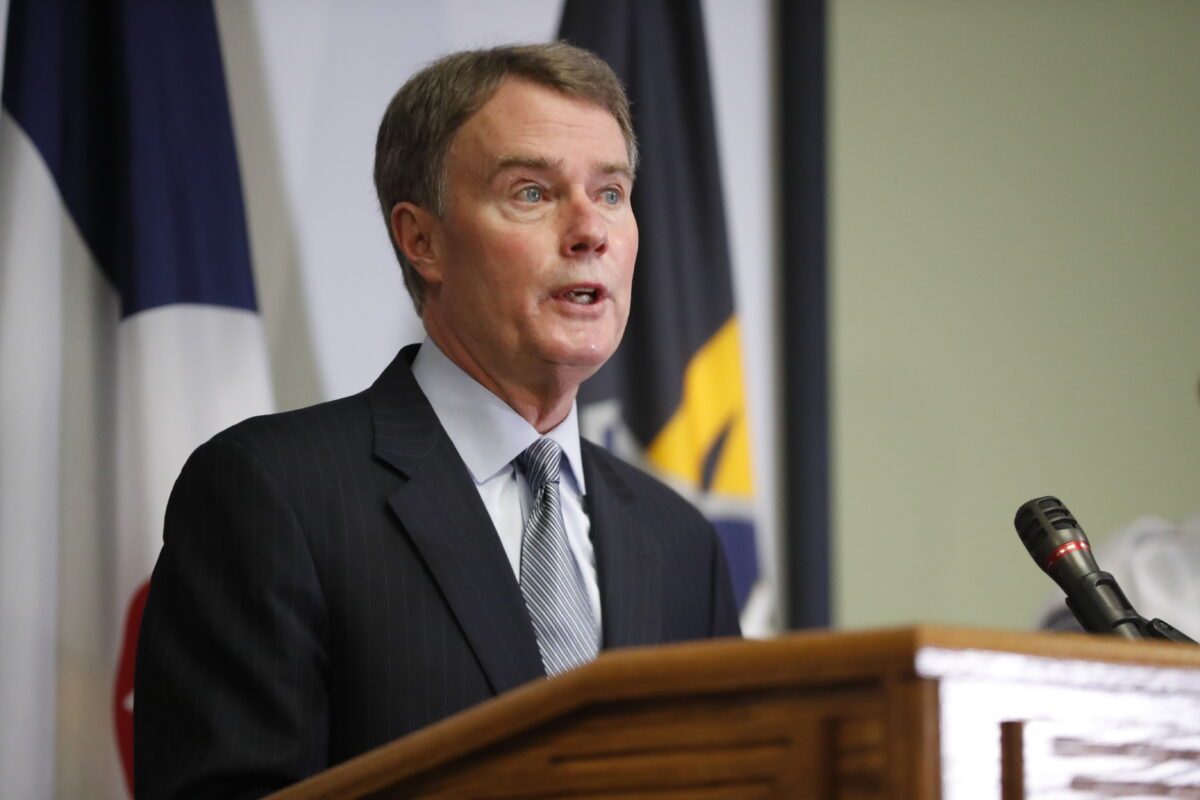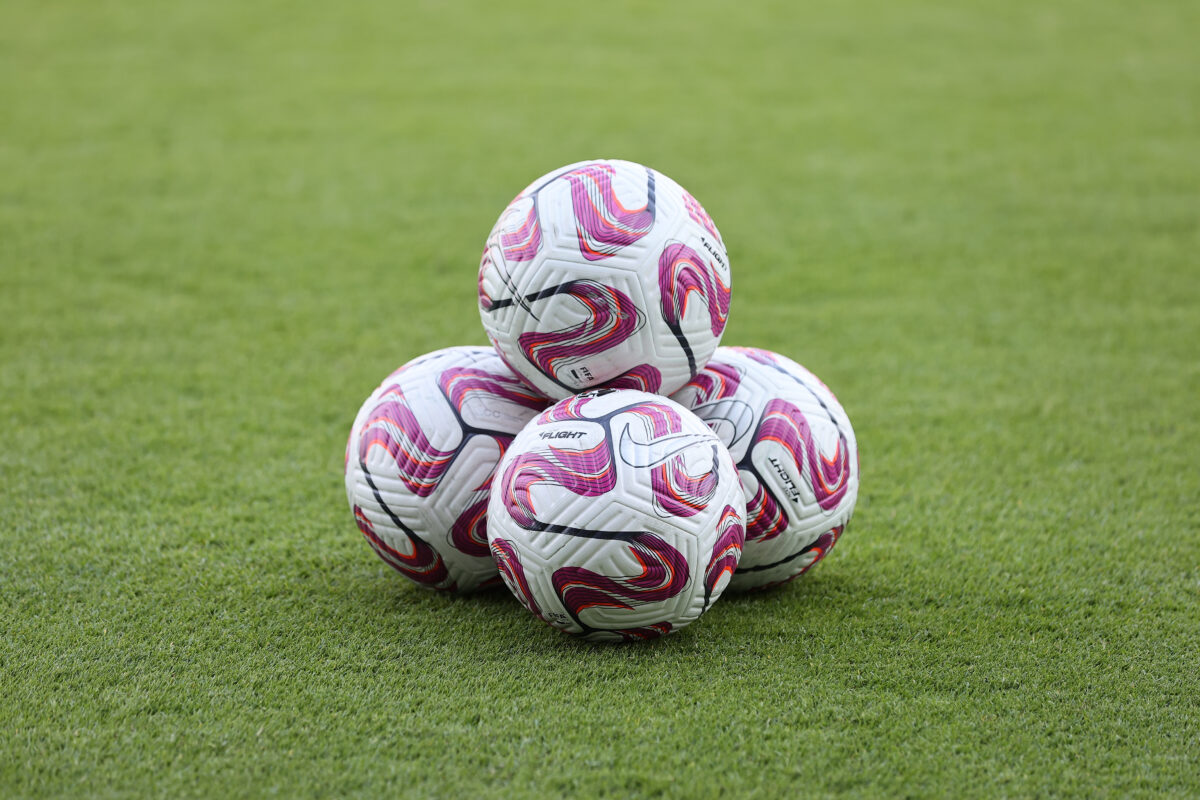The USL Super League will seek Division One sanctioning from U.S. Soccer, a major shift for the burgeoning women’s league that would position them as a potential rival to the NWSL.
The Super League’s aim is to launch in August 2024 with 10-12 teams, but their ambitions have grown since stating in 2021 that they would pursue Division Two sanctioning. Per an announcement on Tuesday, USL intends to create a top-flight competitor for the NWSL that runs from fall to spring.
The USL says that this more ambitious posture is one “reflecting its commitment to the highest standards in American soccer and a collective vision to be a global leader in women’s soccer on and off the field. The USL Super League will follow U.S. Soccer’s sanctioning process.”
Per a press release, USL CEO Alec Papadakis said that the new league “will sit at the top of our women’s pyramid with strong ownership groups, modern stadiums, and passionate fans that will deliver immediate viability and long-term sustainability.”
Papadakis added that the intention is “to make the USL Super League globally recognized and admired for its financial stability, operational excellence, community building and high-level competition. We are establishing and growing our national footprint while ensuring that all our teams are owners or primary tenants of a soccer stadium.”
That group of initial markets includes the following eight, with the league saying that more will be announced in the coming months:
- Charlotte, N.C.
- Dallas/Fort Worth, Texas
- Lexington, Ky.
- Phoenix, Ariz.
- Spokane, Wash.
- Tampa Bay, Fla.
- Tucson, Ariz.
- Washington, D.C.
Six of those markets have some significant connection to an existing USL team on the men’s side. In some cases, the links are straightforward: the Phoenix, Lexington, and Tucson teams will be run by the ownership groups that control Phoenix Rising FC, Lexington SC, and FC Tucson. The Spokane entrant in the Super League is linked in the release with a forthcoming USL League One team set to begin play in 2024.
In some cases, the connections are present, if not outright stated. While the release makes no mention of USL League One’s Charlotte Independence, the Charlotte group is planning to play in the same venue (American Legion Memorial Stadium) and share the same majority owner (Dan DiMicco) as the Independence, whose CEO Jim McPhilliamy is leading “the formation of the club’s ownership group.”
DiMicco was previously said to be in the process of selling his Independence shares in the wake of Covid-19 conspiracy theory tweets and, per a report in The Athletic, concerns over alleged racial stereotyping. DiMicco was in 2021 condemned by the Independent Supporters Council for “hate speech, blatant racism, and conspiracy theories.”
The Washington, D.C. group will be run by Loudoun United FC majority owner Attain Sports and Entertainment, with the USL release saying that the new team would be operated “in partnership with D.C. United.” United already has the NWSL’s Washington Spirit as a tenant at Audi Field, as well as at their training facility in Leesburg, Va.
The USL Super League announcement lists five more cities as “initial markets for subsequent seasons (pending completion of a stadium project).” Those groups include:
- Chattanooga, Tenn.
- Indianapolis, Ind.
- Jacksonville, Fla.
- Madison, Wisc.
- Oakland, Calif.
Four of those groups will be partners with existing USL men’s teams, while Jacksonville is connected to a future USL Championship expansion side aiming to begin play in 2025, and has an ownership group including former NFL player Tim Tebow.
“Following the inaugural season, the USL Super League will strategically expand its national footprint. Multiple expansion teams are confirmed to join the league upon completion of their stadium and infrastructure projects,” read the USL Super League statement. “In the coming months, the USL Super League will announce additional markets whose clubs will play in the inaugural season, and additional markets for future expansion.”
Challenges ahead for Super League
There is surely more room for a larger pool of professional soccer clubs for women in the United States, and the USL Super League knows it. Their announcement points to the fact that there are 101 professional clubs for men, while the NWSL’s 12 teams represent the entire pool in the women’s game.
It’s also no secret that the player pool exists to stock more teams. Dozens of players leave college for European contracts to keep playing, while NWSL teams often have unsigned players training with them. Many more players simply opt out of pursuing a career in soccer, taking their degrees and heading off into careers outside of sports.
There is also some degree of value in testing the oft-stated theory that a fall-to-spring league might have success on some fronts that U.S.-based leagues have found to be a headache. Will winter weather be too difficult to play through, or too daunting to draw crowds? Will aligning on a transfer market and international window front make for a smoother season? It hasn’t been tested, and the USL Super League could end up being a pioneer if the idea proves to be a success.
However, on two fronts, the USL has taken on a massive challenge. Firstly, there is some degree of precedent for multiple leagues wanting to hold Division One sanctioning, and it is ugly. The NASL, after years of acrimony with MLS and the USL, collapsed over a lack of a pathway to gain that approval from U.S. Soccer, and an inability to maintain a stable of teams that could actually meet the standards involved.
Moreover, in the women’s game, the NWSL’s very recent history is a crystal clear example of what happens when individual team resources aren’t significantly higher than what is listed in U.S. Soccer’s Pro League Standards.
NWSL clubs, even the ones that went through the worst troubles in the wake of the Yates and joint NWSL/NWSLPA investigations, met those standards, yet were still demonstrably unsafe environments. Players were subject to a lack of institutional protections at the club level, whether that be from harmful staff or owners or from the perspective of adequate facilities on the soccer side.
There is surely room for a hypothetical team that that meets USSF Division One standards and does not have a billionaire owner, Many of the problems the NWSL has run into were not entirely down to lack of funds, but instead involved bad actors, a lack of professionalism, and a lack of desire to do right by players. However, the resources help prevent all of those things, and in so many cases across the NWSL, better investment has lead to better outcomes.
It has been difficult for all of soccer’s history in this country to find the number of stable, well-run ownership groups needed to run any league. MLS was infamously pronounced dead by its cadre of team owners before Lamar Hunt rallied them to carry on, while USL has seen six fully professional men’s teams fold since the end of the 2019 season.
Two whole women’s soccer leagues have gone under since the turn of the century, and most of the early history of the NWSL (and many of its failings) centers around fear of collapse rather than striving to build something great. NWSL has had multiple teams fold or relocate in a hurry, and its 2023 progress still has to be seen as the fragile early moments of something more sturdy taking root. This is a hard business to be in, and an even harder one to do right.
The USL Super League, if it can meet the goals it has laid out, would be a dramatic step in the right direction. However, when placed in the context of both women’s sports and professional soccer in the United States, their own stated objectives — 10-12 teams, at soccer-specific venues where they hold control over the schedule, beginning play in 15 months — are going to be immensely difficult to pull off.
[lawrence-related id=19561,19120,16748]



